Acoustic sensors enable efficient and non-invasive monitoring of a wide range of species, including many that are difficult to monitor in other ways. Although they were initially limited in application scope largely due to cost and hardware constraints, the development of low-cost, open-source models like the Audiomoth in recent years has increased access immensely and opened up new avenues of research. For example, some teams are using them to identify illicit human activities through the detection of associated sounds, like gunshots, vehicles, or chainsaws (e.g. OpenEars).
With this relatively novel dimension of wildlife monitoring rapidly advancing in both marine and terrestrial systems, it is crucial that we identify and share information about the utility and constraints of these sensors to inform efforts. A recent study identified advancements in hardware and machine learning applications, as well as early development of acoustic biodiversity indicators, as factors facilitating progress in the field. In terms of limitations, the authors highlight insufficient reference sound libraries, a lack of open-source audio processing tools, and a need for standardization of survey and analysis protocols. They also stress the importance of collaboration in moving forward, which is precisely what this group will aim to facilitate.
If you're new to acoustic monitoring and want to get up to speed on the basics, check out these beginner's resources and conversations from across the WILDLABS platform:
Three Resources for Beginners:
- Listening to Nature: The Emerging Field of Bioacoustics, Adam Welz
- Ecoacoustics and Biodiversity Monitoring, RSEC Journal
- Monitoring Ecosystems through Sound: The Present and Future of Passive Acoustics, Ella Browning and Rory Gibb
Three Forum Threads for Beginners:
- AudioMoth user guide | Tessa Rhinehart
- Audiomoth and Natterjack Monitoring (UK) | Stuart Newson
- Help with analysing bat recordings from Audiomoth | Carlos Abrahams
Three Tutorials for Beginners:
- "How do I perform automated recordings of bird assemblages?" | Carlos Abrahams, Tech Tutors
- "How do I scale up acoustic surveys with Audiomoths and automated processing?" | Tessa Rhinehart, Tech Tutors
- Acoustic Monitoring | David Watson, Ruby Lee, Andy Hill, and Dimitri Ponirakis, Virtual Meetups
Want to know more about acoustic monitoring and learn from experts in the WILDLABS community? Jump into the discussion in our Acoustic Monitoring group!
Header image: Carly Batist
No showcases have been added to this group yet.
Field-based ecological engineer and naturalist with a special interest in data science and a strong passion for innovation in biodiversity monitoring.
- 0 Resources
- 2 Discussions
- 6 Groups
- @CameronChristopher
- | He/him
The Cornell Lab of Ornithology
Migrated after a decade in tech to conservation, passionate about participatory/community science, now working at the K. Lisa Yang Center for Conservation Bioacoustics, and the Cornell Lab of Ornithology.
- 0 Resources
- 1 Discussions
- 3 Groups
A conservation leader, focusing mainly in primates conservation & research, Conservation education and Climate change Resilience, and adaptation
- 2 Resources
- 1 Discussions
- 7 Groups
Machine learning & data science specialist. Passionate about oceans, data and impact.
- 0 Resources
- 4 Discussions
- 5 Groups
Conservationist | Ecologist| Geospatial Scientist
- 0 Resources
- 1 Discussions
- 12 Groups
- @tobiaspetri
- | he/him
Schäuffelhut Berger GmbH
data science & algorithmic development for movement ecology



- 11 Resources
- 33 Discussions
- 10 Groups
biodiversity monitoring, bioacoustics, camera trapping, and AI
- 0 Resources
- 4 Discussions
- 3 Groups
Forester/ Ecologist with a Master’s Degree in the department of Range science - Wildlife and Fresh water fisheries.
- 0 Resources
- 0 Discussions
- 11 Groups
- @Ilenia
- | She/her
I'm a PhD student focusing on communication in canids. I'm interested in animals' social behavior and cognition.
- 0 Resources
- 2 Discussions
- 5 Groups
- @Pooja_Lama
- | She/Her
I am an early career researcher who is interested in contributing to wildlife conservation.
- 0 Resources
- 0 Discussions
- 9 Groups
- 0 Resources
- 0 Discussions
- 8 Groups
- @santhosh
- | he/him/his
Leads Technology for Conservation programme at The Habitats Trust
- 0 Resources
- 3 Discussions
- 10 Groups
Analysing recordings of gunshots could help save endangered species around the world by identifying poacher hotspots.
7 January 2024
Digital monitoring tools are helping rangers protect wildlife in South America's Atlantic Forest. Could sound-based maps pin down the poaching threat?
7 January 2024
The IQOE Task Team on Low-Cost Hydrophones for Research, Education, and Citizen Science is looking for industry partners to develop a low-cost hydrophone.
15 December 2023
Article
How to engage decision makers for a more sustainable land management for both citizens and landowners in developing countries.
15 December 2023
Sharing our startup's webpage, featuring information about our services and products. We are open for new partnership, collaboration R&D project in the field of GIS data analysis.
15 December 2023
With the support of Women in Conservation Technology (Kenya) and Arm, I had a chance to work with Kijabe Environment Volunteers in Kikuyu Escarpment Forest. This was an opportunity to channel my passion for the...
1 December 2023
Prospective PhD students with a background in acoustics and an interest in Arctic ecology are encouraged to email Michelle EH Fournet
16 November 2023
Sarab Sethi is looking for a PhD student (Sept 24) to investigate real time insect pollinator monitoring with acoustics. Sensor design, ML, lab and field experiments, and more !
16 November 2023
Join the Rainforest Connection & Arbimon team to develop software for biodiversity monitoring!
14 November 2023
I just discovered this freely available book on digital signal processing and love the fact that it is“…intended for students … who may not have much mathematical or engineering training.” Seems like a great resource...
31 October 2023
Baker Consultants has released new ecoacoustic research assessing the benefits of using automated detectors alongside transect bird survey methods.
30 October 2023
Article
Five #tech4wildlife people, projects and updates that caught my attention this month. This issue is a naturetech, biodiversity startup edition! Featuring a living map of the biodiversity startup scene, is nature data...
27 October 2023
August 2025
event
September 2025
event
October 2025
November 2025
event
February 2025
event
event
January 2025
64 Products
Recently updated products
| Description | Activity | Replies | Groups | Updated |
|---|---|---|---|---|
| We actually recently introduced Recording Schedules - where you can control the PUC's duty cycle during (Day, Night, Dawn, Dusk). |
|
Acoustics | 11 months 2 weeks ago | |
| Hey Xavier! Thank you for your interest and question!! The overarching goal of the FinDrop v1 for the WildLabs award is to characterize an instrument and make it as, if... |
|
Acoustics, Build Your Own Data Logger Community, Marine Conservation, Protected Area Management Tools, Sustainable Fishing Challenges | 11 months 3 weeks ago | |
| The main takeaway from this particular localization was that a gunshot was able to be detected considerably further than I previously thought. 2.7km is really far I think for a... |
|
Acoustics | 1 year ago | |
| Hi Nick,Yes, It's very common to have big data in the SD cards when recording bats!I agree with Carly's comments. Indeed, I suggest you make a schedule so you do not record... |
|
Acoustics | 1 year ago | |
| So excited for this! These topics are all super relevant and comprehensive. Maybe one thing that might be interesting to hear about is projects where PAM is combined with... |
|
Acoustics | 1 year ago | |
| Hi Stefan,Sorry, I'm not sure I fully understand your question.If you're referring to my first comment, the package I initially tried didn't work with my dataset. The likely... |
+8
|
Acoustics | 1 year ago | |
| Hi there Loveness, I agree there is a ton to learn with acoustic monitoring! Here's my favorite website for learning the (many) basics! Discovery of Sound in the SeaHave... |
|
Acoustics | 1 year ago | |
| Karibu sana |
|
Acoustics, East Africa Community, Conservation Tech Training and Education | 1 year ago | |
| Hi César, Is there a geographic area you're limited to? That would help to narrow down options. I would recommend reaching out perhaps to the Kitzes Lab, Sound Forest... |
|
Acoustics, Citizen Science, Community Base, Early Career, Marine Conservation | 1 year ago | |
| Retweet on OpenSoundscape - great package and documentation that allows you to build your own CNNs! Note that this is in Python though. There are tons of bioacoustics... |
|
Acoustics, Data management and processing tools | 1 year ago | |
| Hi @BrettMargoSupplies this product seems like a fantastic addition to The Inventory, WILDLABS' wiki-style discovery platform for conservation technology. Adding a product is... |
|
Acoustics | 1 year ago | |
| Hi everyone, I am conducting a research project as part of my MSc in Environment and Development at the London School of Economics. I... |
|
Acoustics, AI for Conservation, Autonomous Camera Traps for Insects, Ethics of Conservation Tech | 1 year ago |
Mamalian detection and deterrence in Agriculture
24 August 2024 2:41pm
6 September 2024 3:53pm
Thanks for the plug, @Rob_Appleby
Yes, we do a lot of work with audio playback as a nonlethal deterrent. We generally don’t do any work on identifying the animal though and perform playback when the device is triggered. You would need some type of classification engine for that.
Peruvian Bird Audio Dataset Questions
29 September 2023 3:39am
3 October 2023 10:50pm
Also tagging @NickGardner who works on a similar project! (detecting birds from audio in Peruvian flooded forests)
8 October 2023 4:49pm
Interesting!
Hi Sean, sounds like an excellent project. Definitely talk with the Arbimon folks! As @carlybatist said, I am working with birds in the Peruvian Amazon, but in Loreto. Definitely would like to hear more about your project. As for this labelling issue here, definitely looks like an error. I have not used this dataset, now I'm curious. To be honest, some questionable labelling in that file in general. Bounding boxes can be very subjective...
31 August 2024 10:08pm
Hi Sean!
I was the one who annotated these recordings and this is definitely a mistake- that song is a Hauxwell's Thrush; it's annotated correctly with 15622 but not with 15616 (that's the same species as 15620). I'm currently in the field and don't have the ability to fix it right now, but should be able to later this month. If you have more of these, please send them to me (wah63@cornell.edu) and I'll correct any errors and upload a version 2. Same for you @NickGardner - I'm very happy to chat about any labeling decisions and correct mistakes or inconsistencies where applicable. Some were intentional/tossup decisions because of the subjective nature of manual bounding boxes, as you note, and some of them are obvious mistakes like the example Sean found, which can happen for a ton of reasons, despite my efforts to reduce or eliminate them. For context, I did the data collection, annotation, etc of this project essentially by myself when I was an undergrad, and so I guarantee there are some other similar errors in there, and, well, there is a reason that there haven't been many similar datasets made in this system! Especially at the time I did these (2019), there just wasn't an established standard for many of these decisions, and I just did the best I could. My main goal was just getting *something* from these systems out there, fully transparent and free, so that people like you could have more to work with. Ironically, these sort of human errors are exactly why the tools you're working on are so important, even though the fear of committing them probably contributes to the scarcity of similar datasets. Hopefully we will eventually be able to eliminate this kind of thing with better automated processes, but in the meantime, yes, please send me everything you found and we can correct them.
Thanks so much for using my dataset and looking at it closely enough to find mistakes - together we can make it better and more useful for future users :)
Best,
Alec
Problems trying to download raw recordings from Arbimon backup
27 August 2024 2:00am
28 August 2024 4:22am
@calyptura Try using another version of the download scripts that you can download from this link. There are 2 version of the script available.

Any users of the BirdWeather device?
26 August 2024 7:05pm
27 August 2024 2:14am
I have one installed in my yard (check in the link)
It is an autonomous sound recorder, but focused on real-time a.i. bird identification using BirdNet and they still need to have a connection to the internet to work properly. You can use it in the field without the internet, but as soon it connects to the internet again it is going to upload the recordings on their cloud to be identified. It gets a lot of species right, but, at least with Brazilian birds, there is also a lot of errors.
It also can't be programmed to record as an audiomoth or WildLife Acoustics recorders. For example 1 minute of recording every 10 minute.
I don't know if I helped, but if you have any specific questions I can try to answer them.
Best,
Luciano
27 August 2024 8:16pm
We actually recently introduced Recording Schedules - where you can control the PUC's duty cycle during (Day, Night, Dawn, Dusk).
WILDLABS AWARDS 2024 - FinDrop: Accessible Acoustic Monitoring for Mesophotic Marine Environments
5 April 2024 10:22pm
10 August 2024 6:47am
This opportunity is what got me started in deep reef fishes! The grant is for predoctoral students and is due September 30, 2024!! Happy to help or collaborate with anyone interested :)
Eligibility: STRI seeks a diversity of applicants and encourages students from institutions throughout the neotropics to apply. Awards are based upon merit, without regard to race, color, religion, sex, national origin, citizenship, age or condition of handicap of the applicant.
23 August 2024 1:58pm
Really great project @MattyD797 and team. Looking forward to seeing your progress. What is the target price of the FinDrop?
27 August 2024 5:40am
Hey Xavier!
Thank you for your interest and question!!
The overarching goal of the FinDrop v1 for the WildLabs award is to characterize an instrument and make it as, if not more, sensitive than a ST600 Ocean acoustic instrument at a fraction of the price. While I can’t at this stage provide an accurate estimate of final price, it will be a substantial price decrease over an ST600 while providing the same duration and depth expectations. That decrease in price does exponentially decrease with the number we can expect to sell/interest and may increase with additional features the beta testers suggest.
This award only gets us to the actual building of the prototype v1 by December, but we are already scheduled to have a completed product v2 built by March/April through additional collaborations that will be manufactured and sold through Sexton Underwater Housing Co.
Please let me know if you have any other questions!
CORDAP opens call for innovative projects (<$1.5M) on coral conservation and restoration
26 August 2024 6:01pm
Hydrophone user survey 2024
26 August 2024 6:10am
WILDLABS Virtual Meetup: Bioacoustics Policy Integration and Scientific Impact
22 August 2024 7:57pm
WILDLABS Virtual Meetup: Bioacoustics Data Analysis and AI
22 August 2024 7:22pm
WILDLABS Virtual Meetups Season Five: Listen to the Future
22 August 2024 5:59pm
WILDLABS Virtual Meetup: Bioacoustics Data Networks and Platforms
22 August 2024 5:45pm
WILDLABS Virtual Meetup: Bioacoustics Hardware Innovation
22 August 2024 5:25pm
Can Passive Acoustic Monitoring of Birds Replace Site Surveys?
19 August 2024 1:57pm
19 August 2024 2:02pm
Sound localized my first poachers today
15 August 2024 12:40pm
15 August 2024 2:17pm
The main takeaway from this particular localization was that a gunshot was able to be detected considerably further than I previously thought. 2.7km is really far I think for a shotgun in normal built up environment.
Community Choice Award Winners: 2024 #Tech4Wildlife Photo Challenge
15 August 2024 2:41am
Audiomoth configuration for new users
7 August 2024 5:30pm
9 August 2024 12:36pm
Hi Nick,
Agree with all of Carly's suggestions and the guide provided. You can expect 20GB of data within a relatively short survey period if you don't use triggers. However, I've found the audiomoth triggers can miss detections, especially for some UK bat species which can be quiet/have low frequency signals.
There's some interesting reading in the acoustic survey methods guidelines. There's plenty of international research to get some further background on. You can also read a summary report of some Scottish woodland monitoring we conducted a couple of years ago - link at the bottom of this web page.
Best of luck!
Stefan
12 August 2024 6:46pm
also pinging @Giu.Appel who may have additional insights for bat sampling :)
12 August 2024 7:06pm
Hi Nick,
Yes, It's very common to have big data in the SD cards when recording bats!
I agree with Carly's comments. Indeed, I suggest you make a schedule so you do not record continuously overnight. As Stefan says, the trigger can lose some important bat species, so you need to inform which possible bat species can occur in your area - be careful with the triggering settings.
If you reduce the sample rate (kHz) to 250 kHz, you can also reduce the space on SD cards. I don't know much about the UK bat species, but the 250 kHz sample rate is probably capable of recording all the frequency ranges of UK species.
I'm available if you have more questions, and good luck with the recordings!
Best,
Cast your vote in the #Tech4Wildlife Photo Challenge Community Choice Awards!
12 August 2024 1:46pm
12 August 2024 9:15pm
13 August 2024 11:26am
Seeking insights for the next WILDLABS Virtual Meetup Series
9 August 2024 3:15pm
11 August 2024 8:31pm
So excited for this!
These topics are all super relevant and comprehensive. Maybe one thing that might be interesting to hear about is projects where PAM is combined with other conservation technologies (camera-traps, eDNA, satellite imagery) - in the context of what PAM is or perhaps is not best for.
Another topic that will likely come up within the scope of the first 2 projects is acoustic localization, which I know a number of folks are working on but still has a lot to developed for there to be user-friendly workflows for this.
It would be great to hear from people working in terrestrial vs. freshwater vs marine spaces - these have always felt silo'd. There are obvious differences in the physics of the medium that mean not everything will translate but I still think there can be better/more effective collaboration across the spaces.
Detection and removing of windy events in wild acoustic recordings
12 June 2023 1:28pm
8 August 2024 12:44pm
I replied with a comment to all :)
9 August 2024 12:40pm
Hi Francesca,
I've been exploring this recently, but haven't found a specific solution yet. Could you advise why these packages you have suggested haven't been successful? We they detecting wind, but were not differentiating the penguin calls?
Thanks, Stefan
10 August 2024 10:12am
Hi Stefan,
Sorry, I'm not sure I fully understand your question.
If you're referring to my first comment, the package I initially tried didn't work with my dataset. The likely reasons are related to how these packages analyze sound. For example, Hard Rain uses threshold values of two simple measures: Power Spectrum Density (amplitude) and Signal-to-Noise Ratio at two frequency bands. This isn't sufficient to classify different wind strengths, from low wind to gusts, while also avoiding the misclassification of penguin calls (which are characterized by low-frequency sounds in the same frequency range as wind) as wind.
The solution we found (refer to my last comment on this post) uses deep learning, specifically Convolutional Neural Networks (CNNs), which can provide a valid approach in environments characterized by complex soundscapes. If you're trying to detect windy events of various intensities, I would suggest using our methodology—it's better to use the transfer learning scenario to achieve higher performance.
All the best,
Francesca
Acoustic monitoring: looking to understand its basics
31 July 2024 7:01pm
3 August 2024 3:40pm
I love your learning spirit Loveness!! Keep pushing it.
9 August 2024 4:00pm
Hi Loveness, I have some slides from a training course on the basics of acoustic monitoring that I can send you - ping me an email and I'll follow up!
9 August 2024 4:15pm
Hi there Loveness,
I agree there is a ton to learn with acoustic monitoring! Here's my favorite website for learning the (many) basics!
Have fun learning! - Liz
Day 5 of the 2024 #Tech4Wildlife Photo Challenge: Recap and Rewind
9 August 2024 1:31pm
Healthy trees for our firewood
28 June 2024 5:09pm
6 July 2024 4:47pm
Most welcome @Agripina
5 August 2024 6:10pm
This is really interesting, thank you for sharing this knowledge
6 August 2024 8:00pm
Karibu sana
Volunteering in Bioacoustics
10 July 2024 9:46am
6 August 2024 1:59pm
Hey @cesar_rou ,
I've heard about these internship/volunteer opportunities that may be of your interest.
https://archipelago.gr/get-involved/placements-and-internships/marine-mammal-team/
https://www.cetaceos.org/intership-erasmus/
https://www.cetaceos.org/volunteering/
Also you could subscribe to MARMAM list which often post on training opportunities related to marine mammals.
6 August 2024 3:37pm
Hi César,
Is there a geographic area you're limited to? That would help to narrow down options.
I would recommend reaching out perhaps to the Kitzes Lab, Sound Forest Lab, or Cornell Yang Center?
Listen to the Future: A Bioacoustics Horizon Scan
5 August 2024 7:11pm
6 August 2024 3:38pm
7 August 2024 12:52pm
21 August 2024 3:41pm
Call for Proposals to support the Advancement of Wildlife Research
4 August 2024 7:08am
AI and Ecology Research Infosession
1 August 2024 3:58pm
23 August 2024 9:44pm
Scientific Product Grant
26 July 2024 3:26pm



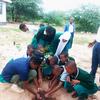








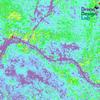







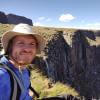

















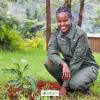


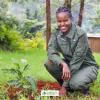


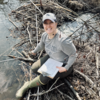







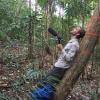














6 September 2024 2:11pm
Hi @saieeshg
Your post immediately made me think of this article on the Boombox, developed by the legends at FreakLabs (@Freaklabs), which I think is close to what you are after. There are other approaches too that could be worth a look. For example, there's the super cool system @kimhendrikse has designed based upon AI image detection (linked here). And @EstherGithinji wrote a great article summarising a variety of different approaches. Reach out if you have any trouble finding things and more than happy to discuss anything as this is an area of great interest to me and a lot of other members.
All the best,
Rob